


Home Energy Water Work Economy Solution Politics Team Product Recycling Cars Ships Aircrafts Promotion
World Pollution Air Weather Violence Women Weapons Psychology Plants Animals Food Peace Faith Imprint
Weather


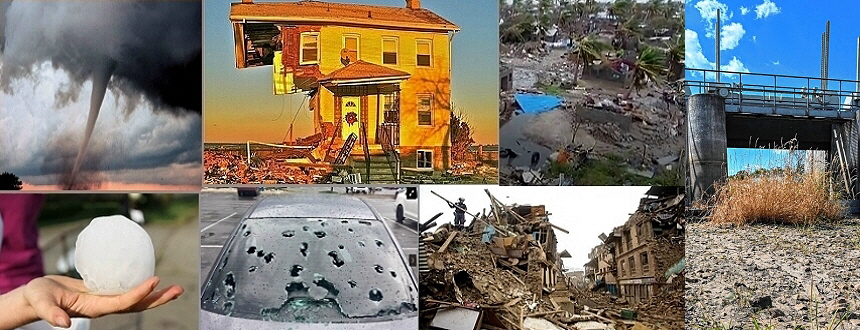
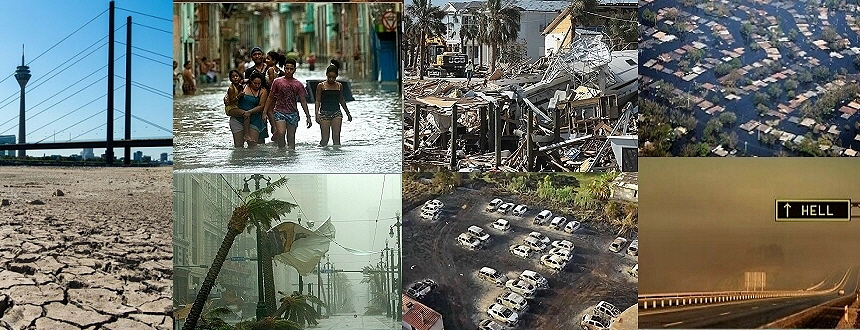
Storms, drought, floods
At the moment, the weather and its consequences are being reported heavily again, with a particular focus on the heat waves, which are becoming more and more violent. This is associated with more and more spontaneous self-ignition of forests that can no longer be explained with fairy tales about arson, which was still the common method up to now. The previous theories of the "events of the century" also fall by the wayside, since the events are constantly repeating themselves and are also constantly becoming more and more violent. Especially in the USA, the weather changes seasonally between extreme heat waves and extreme cold events, as well as hurricanes, floods, droughts and forest fires. Overall, such events occur from Canada to Brazil and also in Europe, Africa, Asia, India, Australia, basically all over the world, we see extreme weather events. And don't let anyone tell you it's going to get better. We are currently dealing with whether the point of no return has long been passed or not. What we can determine with relative certainty is the planned and probable economic growth. Since most of this growth will take place in the poorer countries, which understandably want to catch up, but unfortunately there is no way they work with green energy and/or green transport, temperatures and the associated extreme weather events will continue to increase. Especially as far as the USA is concerned, it should be noted that the infrastructure for individual transport is currently being expanded on a large scale in the USA, there is hardly any insulation on the buildings but plenty of air conditioning, in short the chance that in the USA can change something in the short or medium term are negligible, especially since the capitalism that exists there continues to pave the way for the almost impossible growth.
Ocean
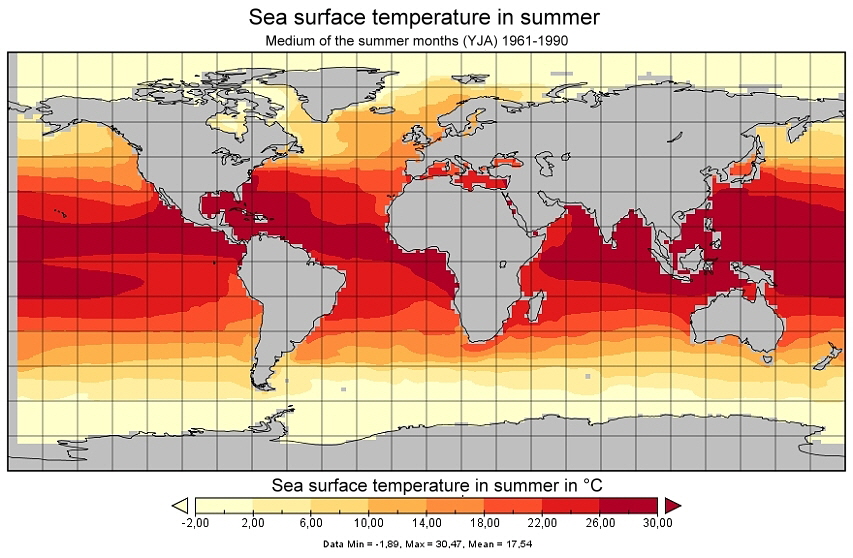
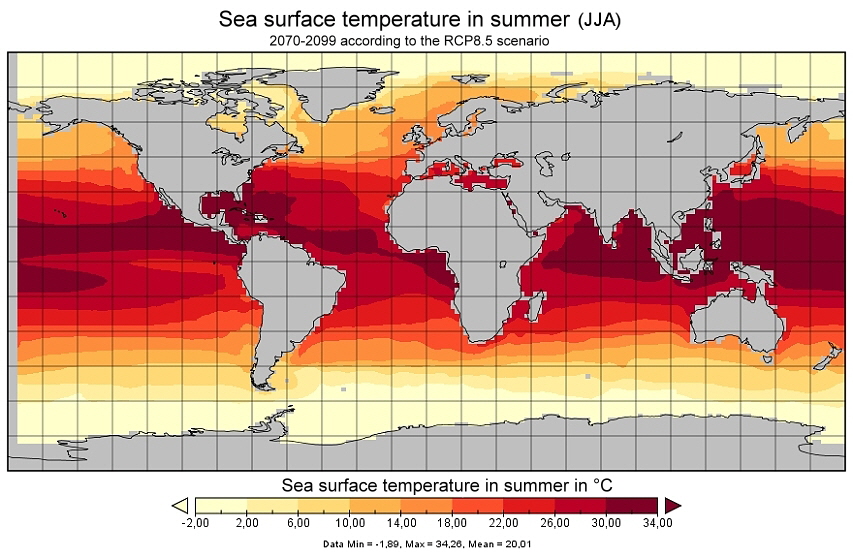
Storm, drought, flood, ocean make weather, ocean protect
The global ocean covers 3.61 x 1014 km2. 40% of the ocean is in the northern hemisphere, 60% in the southern hemisphere. The mean depth is 3,800 m. Due to its large mass and heat capacity, the ocean controls the global climate. It is responsible for absorbing additional heat and carbon dioxide resulting from the global warming of the greenhouse effect produced by the massive amounts of CO2 injected into the atmosphere. The increase in greenhouse gas concentration has increased the heat stored in the Earth system. This is usually read from the warming of the atmosphere (last graph). But the vast majority of the additional energy that warmed the Earth system between 1971 and 2010, about 93%, goes into the ocean. (First graph above and first two graphs below) Heat absorption by the ocean therefore provides a buffer Temperature changes and significantly slows down the warming of the earth's surface, and of course the warming rate of the atmosphere, which is currently protecting us from even stronger weather events. The high heat absorption of the ocean causes an imbalance in the energy balance of the earth, which was about 0.9 W/m2 for the period 2005-2019. Even at net-zero emissions, or carbon neutrality (when carbon emitted is balanced by carbon absorbed by natural or anthropogenic sinks), the climate system will remain imbalanced for a long time as the ocean continues to transport heat to the deep ocean (Graph 2077-2099). After reaching net zero emissions, however, CO2 is partly taken up both by the upper layers of the ocean (up to 200 m depth) and by land vegetation. Over time, therefore, CO2 concentration and radiative forcing will decrease. The climate system is stabilized when the deep ocean stops warming and the heat flows are in balance. This process can take thousands of years, a duration that illustrates the thermal inertia of the ocean. At present, the ocean has significantly reduced global warming, but at the same time it has hidden from people's perception how far the earth's climate has already changed due to human influences, making timely action more difficult.
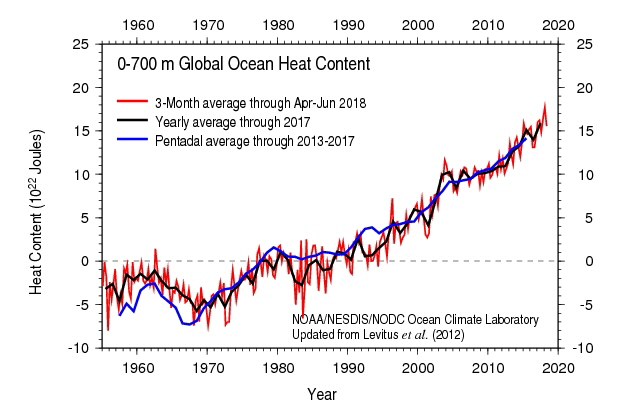
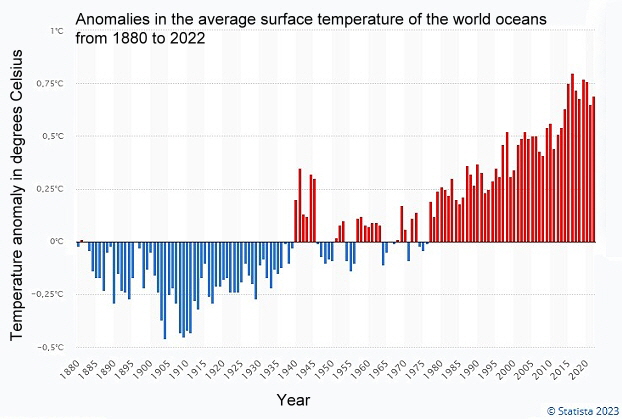

Ozean, Heat und Fire
At the moment, the ocean is increasingly losing its ability to absorb CO2. The absorbed CO2 makes it more and more acidic, which endangers the life of the general food chain and thus the entire ecosystem of the ocean, which in turn reduces the absorption capacity of CO2. This then leads to the atmosphere warming up faster than the ocean can compensate for this, which means that the earth's surface also warms up faster and more intensely. This is one of the previously less well-known, self-reinforcing synergy effects in previous calculations, which meant that these calculations were wrong and the values were surprisingly higher and higher faster. The resulting much higher temperatures in the summer led almost unnoticed to extreme drought conditions in the global forests, which of course now lead to extreme forest fires that recently engulfed entire cities in the USA in smoke.
Century Floods and large Wildfires
Another worrying phenomenon are the so-called "century floods", which probably began around 1993, and from then on there has been one of these alleged "century events" almost every year.
From 2020 onwards the events have increased more and more, instead of one event there are now several events per year, in 2020 and 2021 there are eight such incidents each.
But in 2022 we will have several so-called "century floods" every year and practically everywhere in the world, there are suddenly over 36 incidents in total.
2023 was then unexpectedly the year of the "floods of the century", hundreds of thousands were left homeless, there were many deaths, 56 incidents were recorded around the world.
2024 will probably be similarly catastrophic, there have been 38 incidents so far, the events are the most severe so far, there were around 400 hundred of deaths and just as many injuries and the disaster season is only just beginning in many countries.
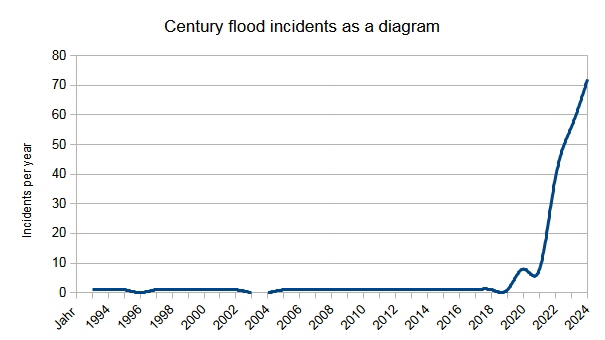
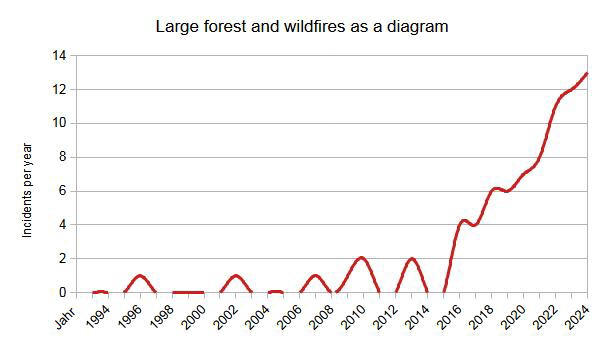
The correlation is clear: the oceans are now charged to 30°C and the temperature trapped under the CO2 is reflected directly in the air, the compensating power of the oceans is no longer there. As a result, the surface water evaporates much faster and the hot air can absorb much more water, which then falls as heavy rain somewhere where the wind carries the clouds.
Fire
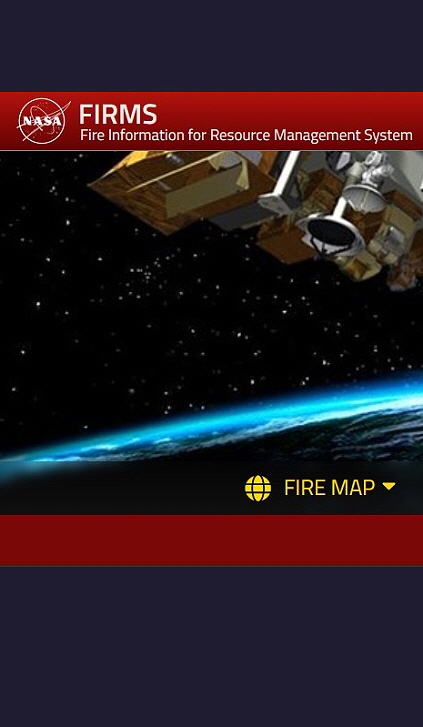
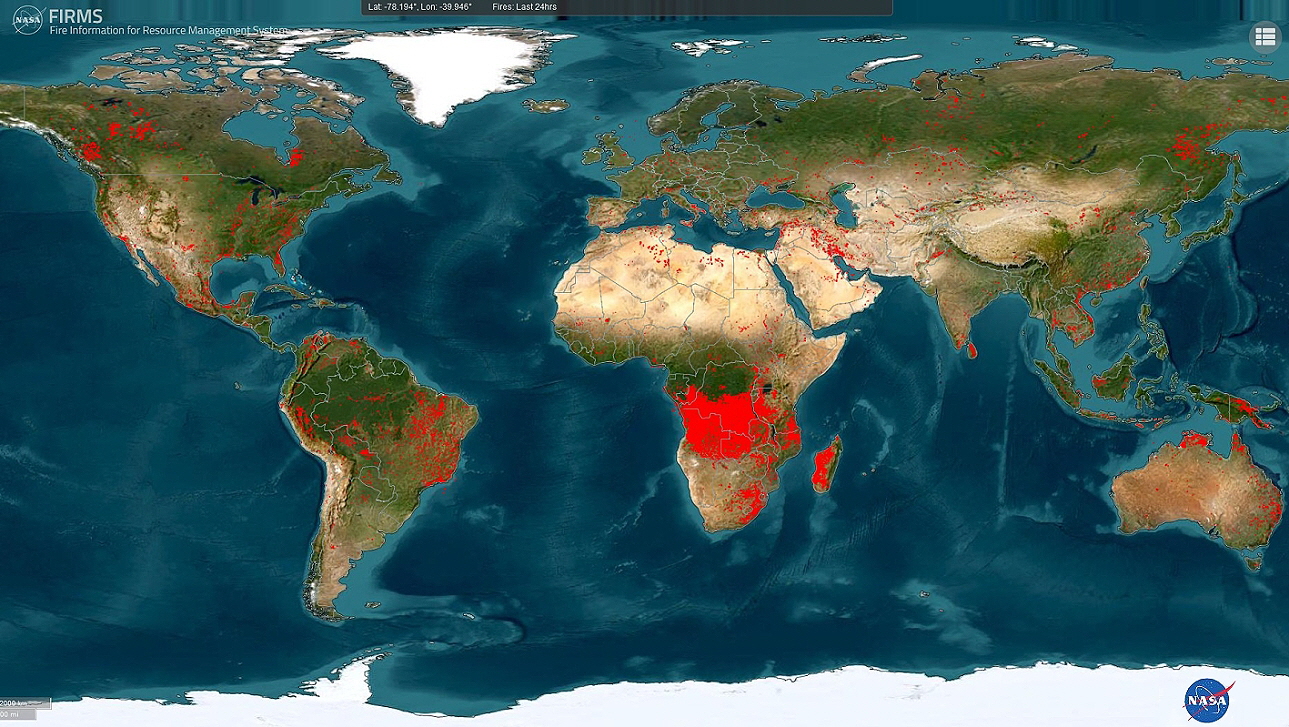
Fire
Here you can see the world - fire situation in July 2023, you can go to this NASA page: https://firms.modaps.eosdis.nasa.gov and see the current fires in the world for yourself.
Don't be told that these fires are in some way normal and possibly also very important for the vegetation. That was and is not the case. Not even in Africa. Scientists at the Northern Research Station and employees have developed a new model called PC2FM, which can also be used to back-calculate the frequency of fires on the mainland. The model uses mean maximum temperature, precipitation, their interaction, and estimated reactant concentrations to calculate mean firing intervals. The model is actually used to calculate the restoration of the ecosystem, but the retrospective calculations clearly show that the natural fire frequency with significantly denser vegetation was much lower than today. The fires were smaller, shorter, and didn't spread as far as they do today. It is known that these fires are spreading more and more and are increasingly occurring in areas that were not previously affected by fires. But the extremely poor condition of the forests also offers the fire better and better conditions. Trees that are dead anyway naturally burn much faster and hotter than healthy trees. This is therefore also one of the self-reinforcing factors against which we can no longer cope with even more extinguishing equipment.
Home Energy Water Work Economy Solution Politics Team Product Recycling Cars Ships Aircrafts Promotion
World Pollution Air Weather Violence Women Weapons Psychology Plants Animals Food Peace Faith Imprint